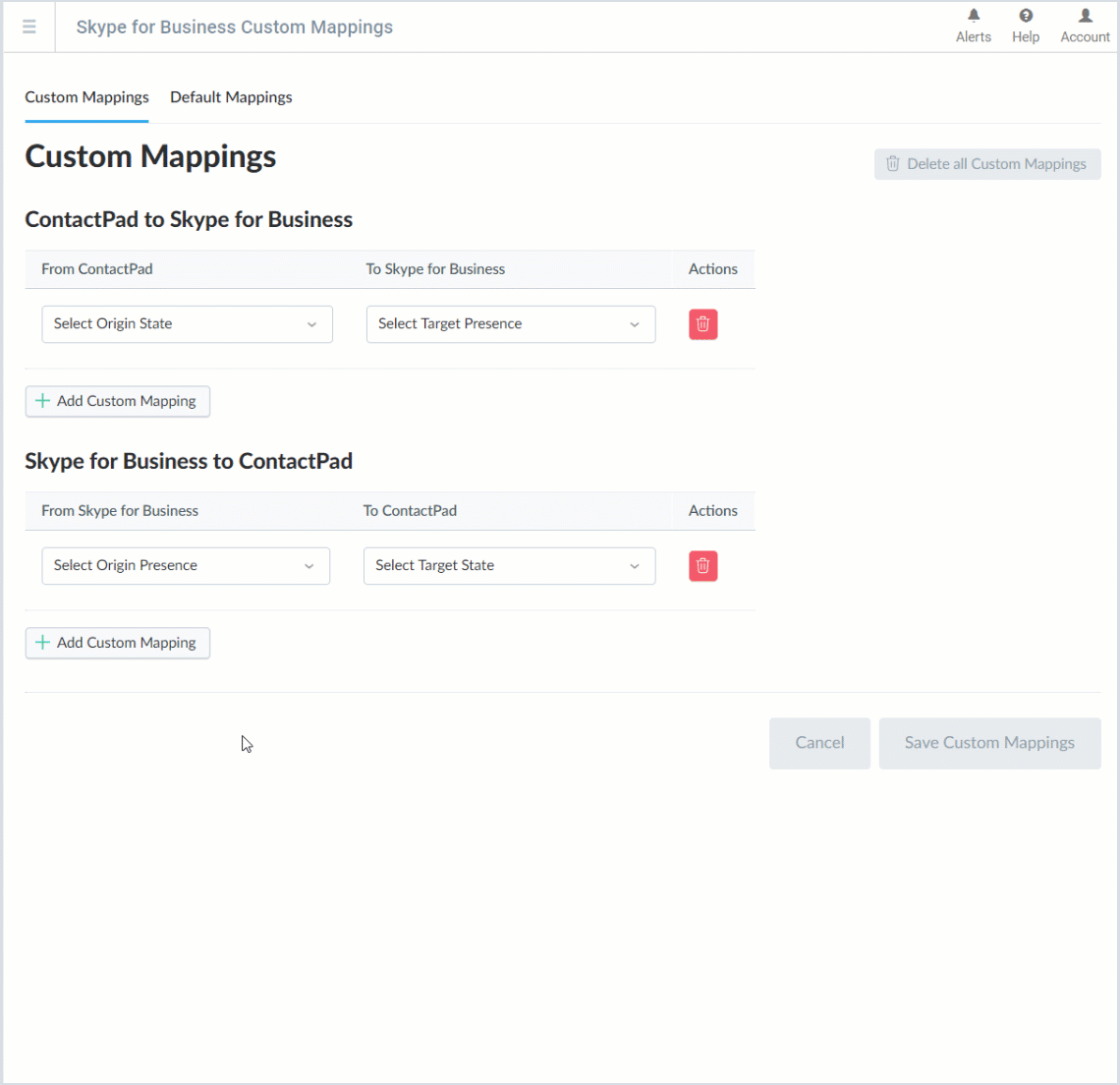You can synchronize your agents' ContactPad states with their Skype for Business presences if you have integrated your account with Skype for Business. You can integrate your account if you are using the Skype for Business Online service or the Skype for Business on-premises application (using Integrated Windows Authentication). To integrate your Vonage Contact Center account with Skype for Business, you must configure the authentication flow for the appropriate version of Skype for Business.
When you have integrated your account with Skype for Business, you can override the default state and presence mappings.
You cannot currently integrate your account with both the Skype for Business Online service and the Skype for Business on-premises application at the same time. If you use both types in your organization, you must choose to integrate with one or the other in your Vonage Contact Center account. |
To integrate your Vonage Contact Center account with Skype for Business, perform the following tasks:
In the Authentication Flow list, click the authentication flow used to authenticate with Skype for Business from ContactPad:
| Authentication flow | Description | ||
|---|---|---|---|
| Skype for Business Online | Select the Skype for Business Online authentication flow if your agents use the Skype for Business Online service and have Office365 accounts.
| ||
| Integrated Windows Authentication (On Premise) | Select the Integrated Windows Authentication (On Premise) authentication flow if your agents use the Skype for Business on-premises application.
|
Your agents' states will now be synchronized with Skype for Business presences. The functionality varies slightly based on which authentication flow you selected:
For information about an agent's experience, see Synchronizing ContactPad state with Skype for Business presence.
You can create custom mappings for all ContactPad states—major, minor and custom—listed in Agent States in Configuration. For information about major, minor and custom agent states, see Configuring agent states.
You can override default mappings in both directions: ContactPad to Skype for Business and Skype for Business to ContactPad.
If you have not created a custom mapping for a state or presence, your account will use the default mapping when an agent changes to that state or presence.
To create custom state and presence mappings, perform the following steps:
In ContactPad to Skype for Business, map a ContactPad state to its target Skype for Business presence. When ContactPad's state changes to that state, Skype for Business changes to the target presence.
| If you select No change as the target presence, the Skype for Business presence does not change. |
To map additional states, click Add Custom Mapping. A new mapping appears. Repeat for all the custom mappings you want to create.
You can only map a ContactPad state to one Skype for Business presence. When you have mapped a state, that state does not appear in the list of states for any new mappings. |
In Skype for Business to ContactPad, map a Skype for Business presence to its target ContactPad state. When Skype for Business's presence changes to that presence, ContactPad's state changes to the target state.
If you select No change as the target state, ContactPad's state does not change. |
To map additional presences, click Add Custom Mapping. A new mapping appears. Repeat for all the custom mappings you want to create.
You can only map a Skype for Business presence to one ContactPad state. When you have mapped a presence, that presence does not appear in the list of presences for any new mappings. |
